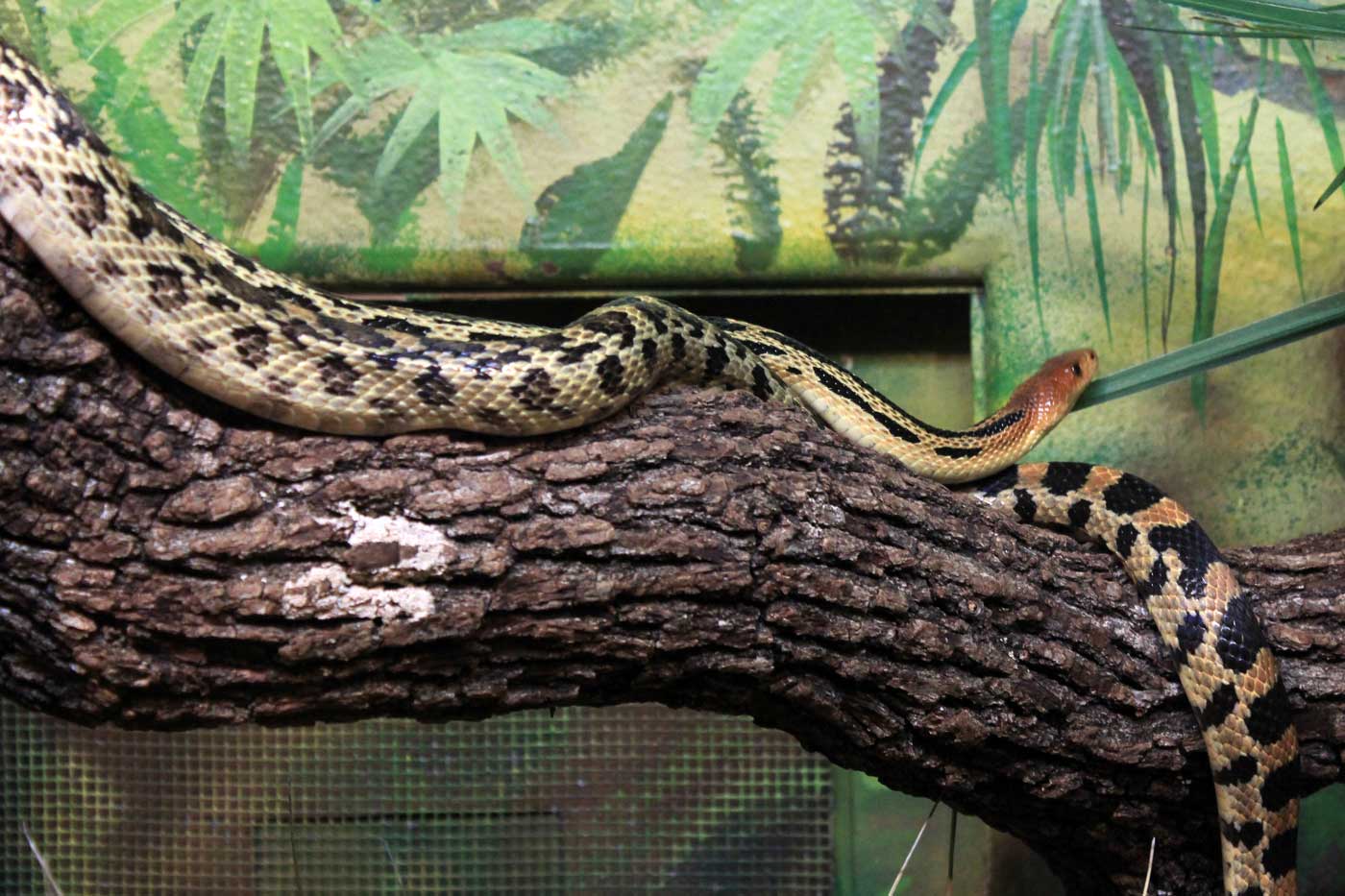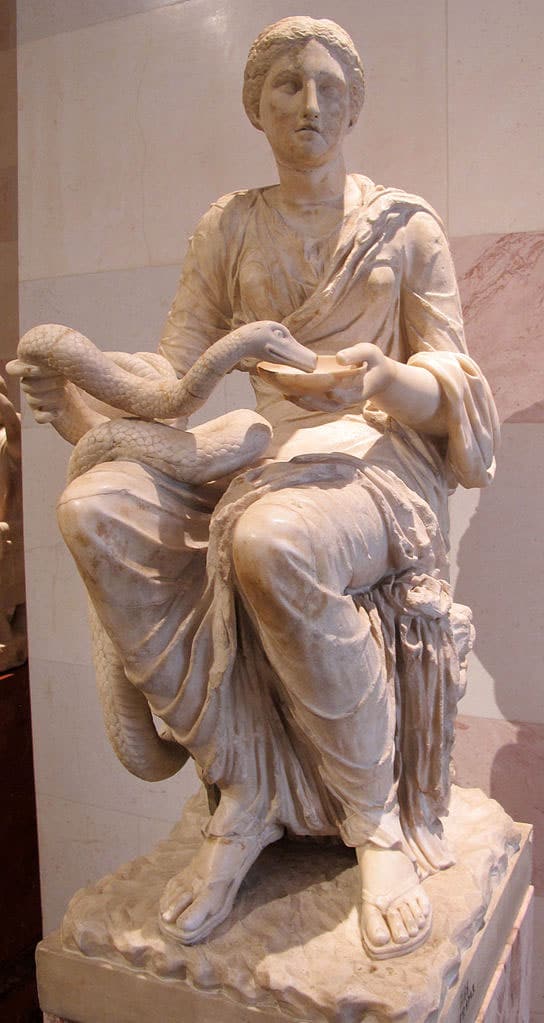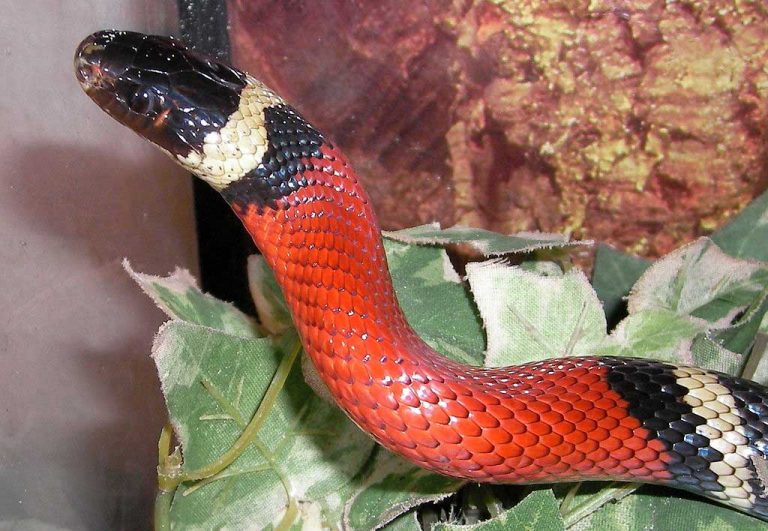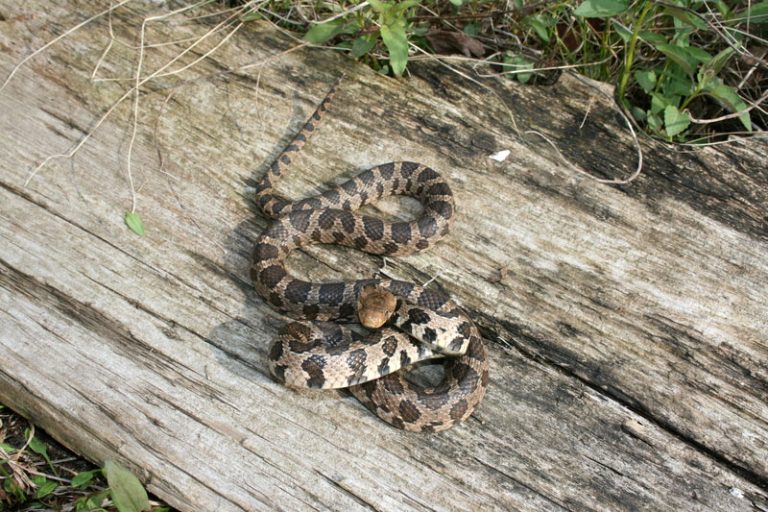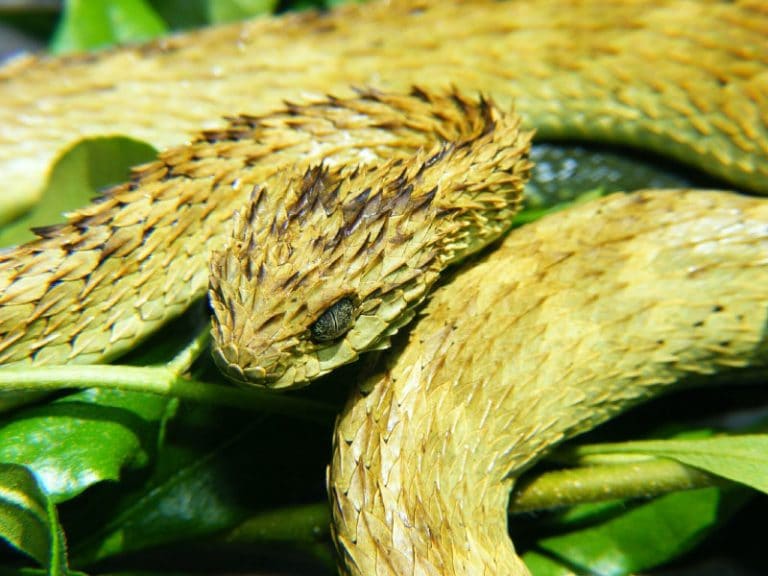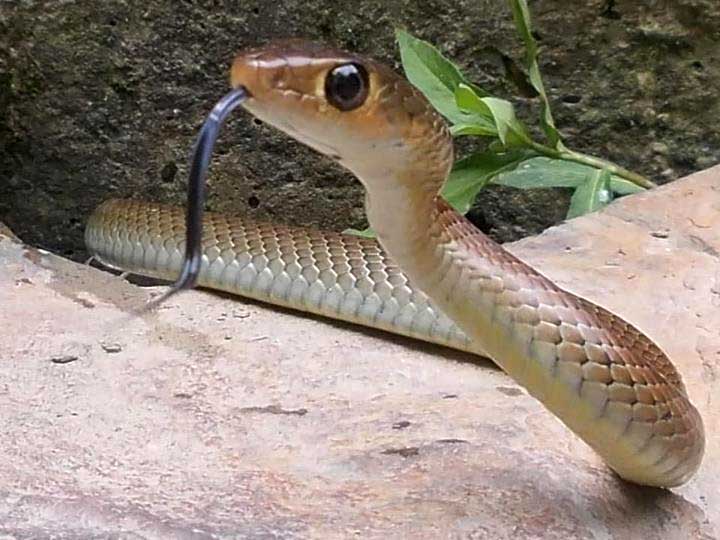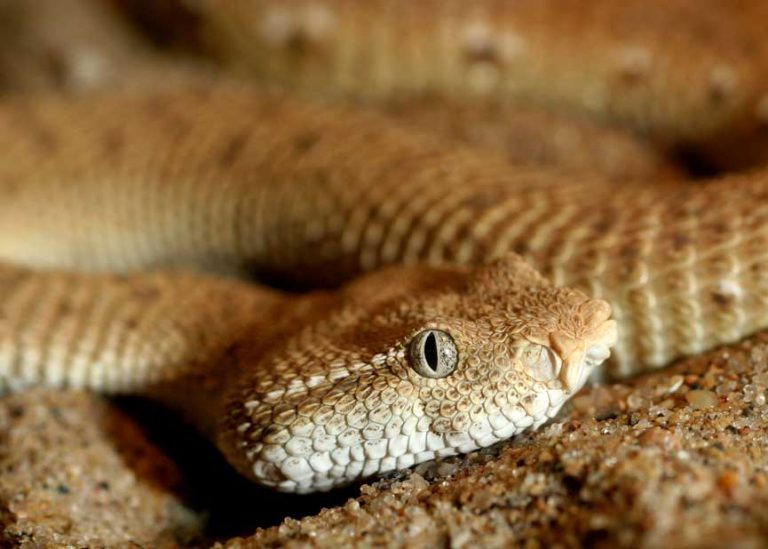Pine Snake
Scientific Classification
| Kingdom: | Animalia |
| Phylum: | Chordata |
| Subphylum: | Vertebrata |
| Class: | Reptilia |
| Order: | Squamata |
| Suborder: | Serpentes |
| Family: | Colubridae |
| Subfamily: | Colubrinae |
| Genus: | Pituophis |
| Species: | P. melanoleucus |
| Binomial name: | Pituophis melanoleucus |
The pine, gopher, and bull snakes are a variety of snakes that belong to the Pituophis genus.
These snakes are among the biggest Colubrids in North America. The Pine snakes inhabit mainly the southeast regions of the United States, even though they are found in the barren pine lands of New Jersey also. The many subordinate species consist of the black pine, the Louisiana pine, the northern pine (perhaps the most frequently seen), and the Florida pine.
These snakes have a sturdy structure which seems frightening (they also sound terrifying). Its head is more or less tiny and conical in shape.
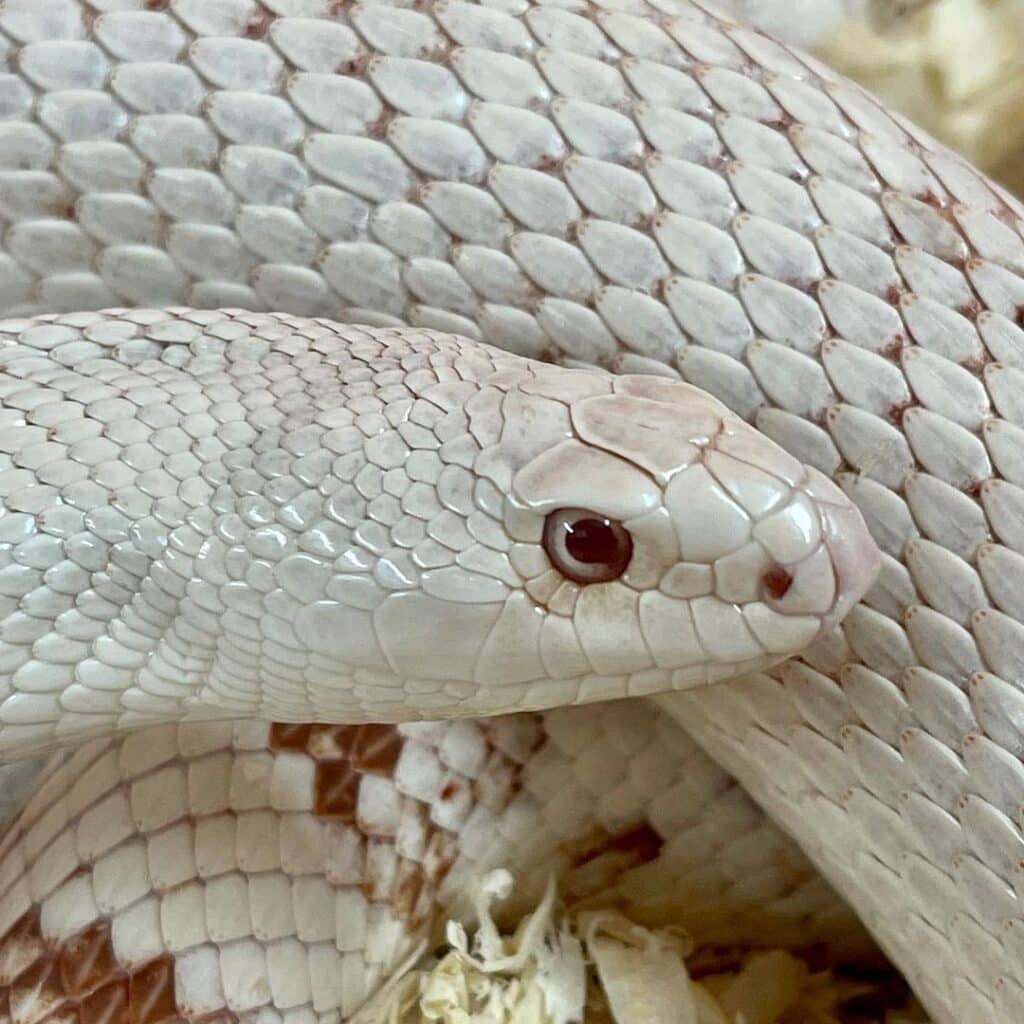
Anatomy
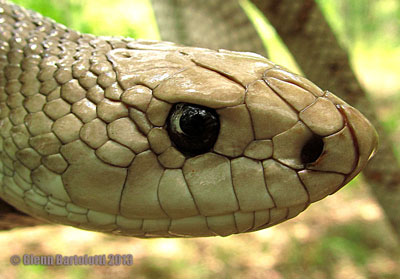
These big pine snakes have solid bodies, approximately 48 to 66 inches (122 to 168 cm) in length. The color of these snakes on land is pale gray, yellowish or white. Their sides normally have dark and almost square shaped patches. The color of the head is dark and fades towards the tail on the dorsal side. It has a white belly spotted dark on the lateral portion. In relation to the several big Colubrids, these pine snake’s heads are small and the snout more or less conical. They possess four scales in the front, quite different from the other Colubrids, which possess only two pre-frontal scales. In the South of Carolina and in Georgia you can find two subordinate species of pine snakes. They are the Florida pine snake botanically named Pituophis Melanoleucus Mugitus and the northern pine snake botanically named Pituouphis Melanoleucus Melanoleucus. The pine snakes have a clear jagged design, whereas, in the Florida pine snakes the design is not jagged or clear; normally they are darker brown in color. Besides the pine snakes of Florida are regularly spotless and ash gray in color. It is possible to discriminate the male snakes from its female by the form of its tail. The long tail of the male snake is not suddenly tapered as that of the female’s.
Behavior
These pine snakes are very good at burrowing, and most of the time they spend in burrows. From the period of the spring season to the fall, especially the months of May to October, rhey rarely appear from the burrows. Right from June to August is the period when these oviparous pine snakes lay eggs. They are famous for building nests in common with many female snakes coming together and laying their eggs in a single nest. The size of their eggs is mostly big when compared to the other varieties of the US snakes. The length of the hatchlings exceeds 12 inches (30.5 cm). When you initially approach a pine snake it hisses too loudly, vibrating their tails.
Habitat
You can see these pine snakes scattered in the Southeast parts. You also see them all over Georgia, the coastal plains of South Carolina and North Carolina, and all over Florida. You also find them scattered in the northern part of Georgia, Tennessee, and Virginia’s arid mountains.
As a Pet
Breeding
The Pituophis genus is quick at breeding in captivity. If you select snake keeping as a hobby, you gain a lot of contentment in breeding these snakes. Be on the watch – prior to taking a decision. Make sure that you are ready and well equipped to nurture the young ones to come.
Housing
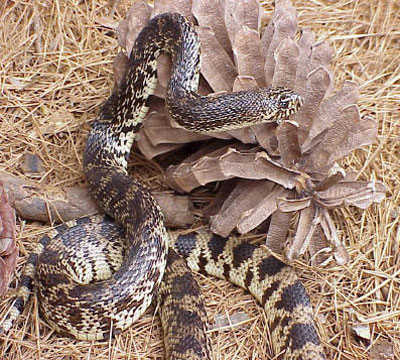
Place your pine snakes in an aquarium of 30 gallons, preferably a bigger one, which is a must for certain species. Provide proper ventilation for your aquarium and fasten the cover of the aquarium, since these pine snakes are talented escapists similar to other snakes. When compared to other snakes these pine snakes are timid and love privacy. They require a place to stay away from everything; thus provide them with one or two hide boxes in the aquarium. A pine snake develops unnecessary stress if you place it in an open cage with no hideouts, causing sickness. A perfect suggestion is to have two hiding places, one in the cooler location and another in the basking location.
Strong branches provided in the pine snake’s cage for climbing is an added facility. In the world of snakes, pine snakes are one among super diggers; hence provide them a substrate that facilitates this function. An ideal substrate is a mulch of cypress. If you have a hideout in the snake’s cage, then this is not a must. Some of the preferable substrates are outdoor/indoor carpeting and butcher’s paper. Do not feed your pine snake close to the substrate, as this causes ingestion of the shavings or chips, carpeting.
The high humidity in the pine snake’s enclosure is not a requirement, whereas provide them with a big water bowl with water free of chlorine that permits the snake to immerse itself most of the time. Inspect the water bowl frequently to make sure if your pine snake has defecated. Maintain cleanliness properly. At shedding and pre-shedding periods, pines favor misting infrequently.
Food
The diet of the pine snake consists of rats and mice that you can have killed in advance. In case you feed them with live animals be vigilant while feeding. There is a chance for the snake being injured in case it fails to eat the live animal. Even a live rat, as a future prey can kill the snake. Routine feeding differs from species to species, but as a general rule, feed your pine snakes once in 7 to 10 days. Maintain the size of the snake’s meal in proportion to the size of the snake. Initiate feeding your young ones with pinky mice.
In anticipation of food several snakes turn violent, as a result of which, several keepers use feeding boxes to feed their pine snakes, so that, when you open the cage, the risk of your pet snapping back is reduced. Use a rubber box or a tank containing safe substrate such an outdoor/indoor carpeting or paper.
Handling
Prior to reaching out to a pine snake, wash your hands free of any other animal odor, properly. While hunting, a snake detects its prey by means of sensing the smell of the prey, therefore in case your hand has a prey’s smell there is possibility that your pine snake may treat it as a possible meal. Raise your pine snake calmly. With a firm and light movement, position your one hand at one-third the distance down the snake’s body and lift it with your other hand placed at more or less two third the distance. While carrying your pet, give its body a support with your arm. When you raise a pine snake, they feel agile. Unlike other snakes the pine snake will not coil round your arm. On the other hand, they need to move in a single path. As far as possible, give your snake liberty in movement. Give the snake a direction of movement of its head and slowly direct it in the path you need it to proceed. While carrying your snake, be careful that you do not pinch or snatch it. Be careful that your pine snake is not held near your face, and do not let it curl round your neck. While handling they might musk. Never handle a snake as soon as it has taken food, it is prepared to shed or really shedding. When you finish handling your snake cleanse your hands properly.

Having discovered a fondness for insects while pursuing her degree in Biology, Randi Jones was quite bugged to know that people usually dismissed these little creatures as “creepy-crawlies”.

